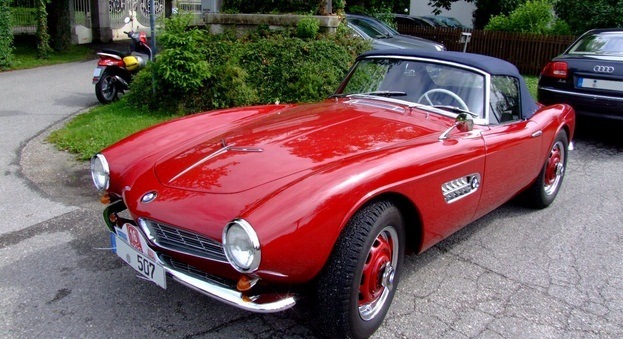After the second world war, the car industry was one of the most handicapped world over as research and development prior to the war had focused too much on developing modern warfare technology – particularly airplanes. BMW, especially, was a successful automobile company in the pre-1930s but Germany’s position in the world war severely dwindled its fortunes. As a matter of fact, the company’s move to launch a large premium car in the year 1951, just three years after it resumed production, took everyone by surprise.
The new car had a number of advanced technical features at that time which were improved from 1939. These new additions generated a lot of publicity for the car model and BMW as a company in particular. However, despite the fame, the car and its advanced features did not manage to generate sufficient income for the company at that time.
A second model, the 502, with a V8 engine incorporated a more impressive creation and opened the gate for the company’s financial prosperity. There were several versions of the 502 made in the year 1954 but none actually sold well enough to make substantial profits for the company that year. The poor financial performance of the 507 and the 502 models can be attributed to the bubble created by cars such as the Isetta and Germany’s ruins after the second world war. The company used the little profits it got from the 502 to make the larger 507.
Despite the company’s poor financial performance and the poor market for the BMW 507 in the early years of 1950s, BMW maintained its sights and fixed its ambitions firmly. BMW began manufacturing more units of the 507 in 1954 after being prompted by its US importer – it targeted well-to-do clients in the US. This is the reason the company decided to hire designer Albert Goertz, an aristocrat then living in New York because he understood just what the American clients wanted.
The sketches that Albert Goertz prepared for the BMW board of directors in New York were of a sleek and a completely different sports car. They were drawn to be of the 507 model – an exceptional roadster – and bearing in mind the technical aspects of the chassis, it was going to work better than expected. The chassis of the car was essentially of the .2 liter super 507 3 although it was 35.5 cm shorter. The greater compression meant that the engine could be upped from its 140 horsepower to 150 horsepower without making further complex modifications.
The BMW 507 debuted in New York in 1955. The car was beautiful, elegant and sporty, but its popularity did not reach the expected heights in the US market; compared to other roadsters, the BMW 507 did not have enough power under the hood. Production of the model stopped 4 years later in 1959 after only 254 cars had been produced. BMW decided to offer a variety of the models including 3 different rear-axle transmission rations that could offer speeds that range between 190 and 220 kilometers per hour.
Just like the BMW 503, a second version of the BMW 507 was launched in 1957. This version got immediate recognition thanks to the fuel tank flap on the right side of the rear flank. The tank was smaller, holding 65 liters of fuel instead of the original 110 liters and was on the floor of the trunk and not behind the rear seats. The dashboard was also completely re-designed and offered more space for the radio and was considered the most beautiful BMW model ever made since the company’s inception. The new variant is actually what took the war of the exotic sports cars to the next level – it was rare and exclusive and it still survives now, 60 years later.
About the author:
James McDonnel contributed this guest post. James is an automotive enthusiast and a freelance writer who loves everything that has to do with wheels and works for Wish.co.uk you can find more info about rare driving experiences on their website. His articles appear on many online auto publications.


